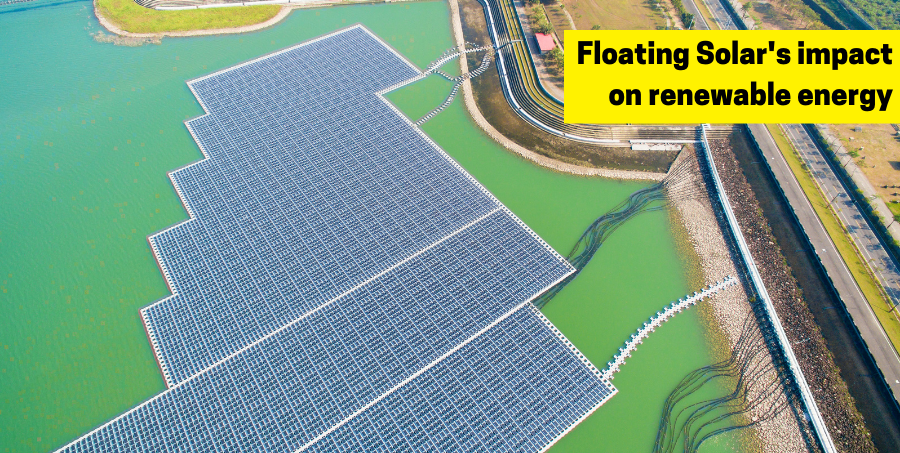What is a floating solar system, and how is it impacting the renewable energy market?

It’s common knowledge that one limitation of domestic solar power panels is that they’re not suitable for every type of roof. They can be compromised and even rendered ineffective by a multitude of contingencies, from too much shade to stubbornly awkward obstructions, to insufficient area and even the age of the roof. Even ‘ground mount’ and solar parking canopy alternatives have their shortcomings, including available space, pricing and the quantity of energy needed.
There are much larger-scale alternatives to these land-based panels, however. What if, instead of a rooftop or ground mount version, we tried to float solar panels on the surface of water?
This isn’t science fiction but new reality, thanks to the development of ‘floating solar’, or ‘floating photovoltaic’ (FPV), systems. The moniker refers to any kind of solar power-generating array floating upon a body of water. Most have been installed on large natural bodies of inland water, such as lakes and basins, though some have been fixed to buoyant structures on man-made alternatives such as reservoirs. This is because these waters tend for the most part to be far less turbulent than ocean sites.
The big pluses for these floating panels are that they don’t require costly land space or tree removal – they are installed instead on otherwise unused water surfaces. Another bonus is that, unlike solid land installations where the efficiency of the panel decreases with rising temperatures, water keeps the floating panels cool enough to generate more power at greater efficiency.
Not only that, but there’s a reciprocal benefit for the water beneath: the panels provide shade for the lakes/reservoirs/hydroelectric dams, etc., reducing evaporation and slashing the potential health and environmental hazards of algae blooms.
Floating solar systems also bring economic benefits that are having a cumulative impact on the renewable energy sector as a whole.
A recent report from the Institute for Energy Economics and Financial Analysis (IEEFA) forecasts that floating solar power plants are on course to generate approximately 900% more ‘clean’ electricity in the Asia-Pacific region. The huge floating solar institutions in Asian countries have been uniquely constructed and tested to withstand typhoons, tempestuous waves, and roaring winds of up to 170km/hour.
Commenting on these developments, Sara Jane Ahmed, an energy finance analyst at the IEEFA, said: “Our research shows more and more ASEAN countries are building solar farms that float on rivers, dams, lakes and reservoirs – even the sea – to produce clean electricity at prices that can compete with power from polluting coal-fired plants.”
Meanwhile, similar innovations are underway in Europe. In Norway, for example, the vast energy consultancy DNV GL has recently approved a colossal solar floating energy ‘membrane’ for installation on coastal waters and man-made reservoirs. Currently in development by Norwegian company Ocean Sun, the structure aims to be a solar energy-generating ‘power house’, courtesy of resilient modified silicon photovoltaic modules secured to a gigantic flexible hydrostatic floating membrane.
A study by the World Bank has estimated, based on conservative assumptions, that the technology developed for floating solar power systems is likely to be in the region of a staggering 400GW. As they’re being built out of coastal and open-sea sites, the market is on course to become gigantic.

